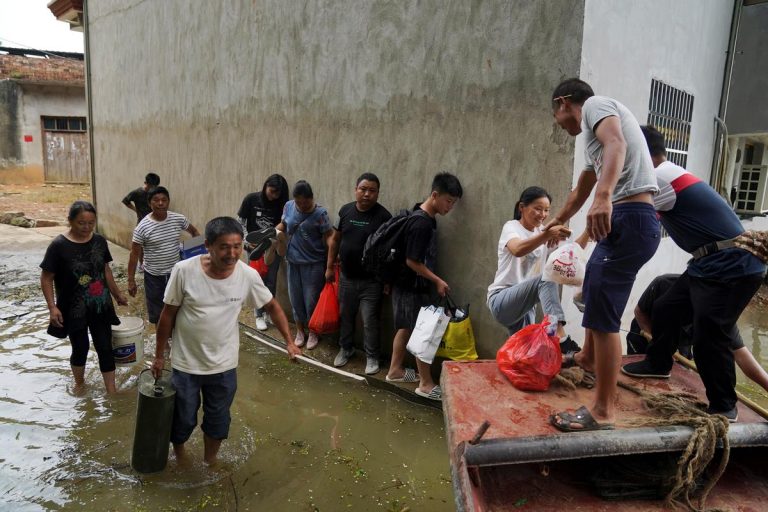
Large parts of central and eastern China were reeling on Friday from the worst floods in decades, as disruption mounted for key supply chains, including crucial personal protective equipment for fighting the coronavirus, and economic damage piled up.
The central Chinese city of Wuhan and the provinces of Anhui, Jiangxi and Zhejiang declared red alerts on Friday as heavy rain swelled rivers and lakes.
Wuhan, on the banks of the Yangtze river where the novel coronavirus emerged late last year, warned residents to take precautions as water levels fast approached their maximum guaranteed safety level.
The giant Three Gorges reservoir, which has been holding back more water to try to ease downstream flood risks, is more than 10 metres higher than its warning level, with inflows now at more than 50,000 cubic metres a second.
The Poyang lake in Jiangxi province, which is formed from the overspill of the Yangtze, is 2.5 metres higher than its warning level. It has expanded by more than 2,000 square kilometres during thus flood season, and parts of the surrounding town have been inundated.
Further east, the Tai lake near Shanghai has also declared a red alert after its water level rose to nearly a metre higher than its safe level.
The summer rainy season brings floods to China almost every year but the impact of the disruption they cause is being felt further afield as Chinese goods become more important in supply chains of items such as personal protective equipment (PPE).
“It’s just creating another major roadblock here in terms of PPE getting into the United States – it is the worst of times for it to happen but that’s what we’re dealing with right now,” said Michael Einhorn, president of Dealmed, a U.S. medical supply distributor, which sources disposable lab coats and other products from Wuhan and nearby regions.
“We cannot get product out for over a week, which is a very long time in our business,” he said, adding that the delays could last another two or three weeks.
Economic activity in parts of China, especially construction and steel and cement demand, continues to be hurt by the flooding, analysts say, suggesting some loss of momentum after a stronger than expected bounce in the second quarter from the coronavirus crisis.
“We estimate recent floods in Yangtze River regions could lead to a gross drag of 0.4-0.8 percentage points on third-quarter GDP growth,” analysts at Morgan Stanley said in a note to clients on Friday.





